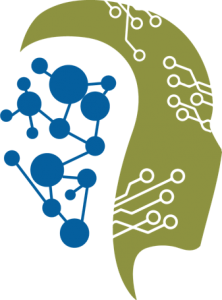
NSF INCLUDES
Developing a Collaborative Infrastructure for Educating STEM Undergraduate Students who are Neurodiverse Learners
Addresses the broadening participation challenge of increasing neurodiversity in STEM fields by increasing the number of students with Autism, ADHD, and other diverse neurological disabilities succeeding in post-secondary STEM education.
Goal: To develop and share a strategic plan, and related materials, for increasing neurodiversity in STEM education leading to STEM careers.
Objective 1: Form a national network of stakeholders to engage in planning and development of the strategic plan and related materials. Accordion Closed
Implementation Step 1: Determine stakeholders and interacting systems
Activity:
1.1 Leadership team (LT) identifies and recruits stakeholders with expertise and lived experiences in the arenas of post-secondary STEM education, neurodiversity in STEM, STEM industry, and services and supports for neurodiverse STEM learners and workforce.
Outcome/Output: Qualified and diverse stakeholder group is recruited and commits to participating in the planning process.
Objective 2: Synthesize data and multiple perspectives to result in clearly defined strengths and challenges aligned with viable solutions. Accordion Closed
Implementation Steps 2-4: Gather data and perspectives, identify gaps and strengths, and identify solutions
2. Gather data and perspectives to describe the structure and functions of the ecosystem
3. Identify the gaps, issues, and strengths of the ecosystem components and the interactions between components
4. Identify potential solutions, discuss implications and likelihood of positive impact if put into place, and arrive at consensus on essential factors to implement
Activities:
2.1 LT develops a “road map” of (a) needed data representing programs, services, systems, and stakeholder viewpoints; (b) sources of data; and (c) plan for acquiring data.
2.2 LT follows plan for acquiring data.
2.3 LT holds a cycle of data-rich conversations with stakeholders in their hubs to (a) interpret data in their contexts; (b) gather stakeholder perspectives represented and not represented in the data; and (c) identify additional sources of data.
2.4 LT meets monthly to review progress on conversations and recalibrate processes as needed.
2.5 Backbone provides support to each LT member and keeps abreast of hub conversations by maintaining a secure portal for housing data, hub notes, and stakeholder testimonies.
Outcome/Output: LT creates a document, based on hub conversations, describing strengths, gaps, and recommended solutions
Objective 3: Informed by data and broad stakeholder perspectives, develop a strategic plan for alliance partners that addresses the challenge of broadening participation of neurodiverse learners in STEM education leading to STEM careers. Accordion Closed
Implementation Step 5: Develop a strategic plan and alliance for implementation
Activities:
3.1 Backbone entity pulls together initial draft of strategic plan, LT reviews draft and provides edits, draft is prepared for sharing.
3.2 Draft is shared on the INCLUDES Coordinating Hub for feedback and validated with participating stakeholders using structure forms.
3.3 Backbone entity incorporates feedback and strategic plan is finalized.
Outcome/Output: Finalized strategic plan with incorporated feedback from multiple stakeholders.
NSF INCLUDES Planning Leadership Team
3 subs on the award
Auburn University

The Ohio State University

University of Missouri – Kansas City

